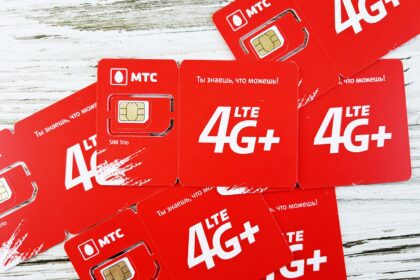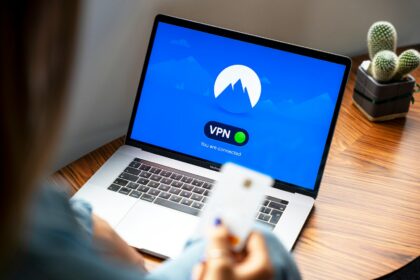Imagine your grandparent with a pacemaker, a tiny device that keeps their heart beating right. Now, picture a hacker thousands of miles away trying to hack into it. It’s like a scene from a movie, but it’s real. That’s why we need the fda cybersecurity guidance. It’s not just a government document; it’s a shield for millions of patients.
In this guide, we’ll break it down. We’ll explore what this guidance is, why it matters, and what it means for everyone. We’ll keep it simple and easy to understand.
First Things First: What Are We Talking About?
Before we dive deep, let’s get our basics straight. It’s important to know the key players and concepts.
Who is the FDA?
The FDA stands for the U.S. Food and Drug Administration. They are the nation’s health guardians. They ensure our food, medicines, and medical devices are safe and effective. If a company wants to sell a new product in the U.S., they need the FDA’s approval.
What is a “Medical Device” in this context?
When you hear “medical device,” you might think of stethoscopes or scalpels. But today, it’s more. A medical device can be:
- An implantable device like a pacemaker or a defibrillator.
- An external device like an insulin pump that a diabetic person wears.
- A large hospital machine like an MRI or a CT scanner.
- Even software on your phone that analyzes your heart rhythm or helps diagnose a skin condition.
These devices are often connected. They use Wi-Fi, Bluetooth, or the internet to send and receive data. This connectivity is amazing for healthcare. But it also creates a risk for cyberattacks.
The Core of the Matter: What is the FDA Cybersecurity Guidance?
The fda cybersecurity guidance is a set of recommendations for medical device manufacturers. It’s a playbook. It tells companies: “If you want to create and sell a connected medical device, here is how you must think about security.” Following this guidance is critical for approval.
The guidance prioritizes patient safety. A security flaw in a banking app is bad. But a flaw in an insulin pump could be catastrophic. The FDA’s rules aim to prevent that worst-case scenario.
The Main Pillars of the Guidance
The FDA’s approach to cybersecurity rests on a few key pillars. Let’s look at them one by one.
1. Security by Design (Building a Fortress, Not a Tent)
This is perhaps the most important concept. The FDA says security cannot be an afterthought. You can’t build a medical device and then add security later. It doesn’t work.
Security by Design means cybersecurity is part of the conversation from the start. It’s like building a house. You don’t build the whole house and then add locks. You build strong walls and integrate locks and security systems into the architecture. For medical devices, this means thinking about:
- Authentication: Who is allowed to connect to this device? How do we verify their identity? It could be a doctor with a special password or a secure app.
- Encryption: When the device sends data (like your heart rhythm), is that data scrambled so no one can intercept and read it? Encryption is like sending a secret code that only the intended recipient can decipher.
- Secure Updates: How will the device get software updates to fix bugs or security holes? The process must be secure to prevent a hacker from sending a malicious update.
2. The Total Product Life Cycle (TPLC) Approach
Cybersecurity is not a one-time task. It’s an ongoing journey. The Total Product Life Cycle (TPLC) approach means that a manufacturer is responsible for a device’s security for its entire life.
“Thinking about security only before a device hits the market is like a car company only testing for safety in the factory, and then never issuing a recall, no matter what problems are found later on the road. It’s unthinkable. The TPLC ensures manufacturers are watching over the device from cradle to grave.”
This lifecycle includes:
- Design & Development: The “Security by Design” phase.
- Premarket Submission: When the manufacturer submits all their security documentation to the FDA to prove the device is safe.
- Postmarket Surveillance: This is the critical part. After the device is sold and in use, the manufacturer must constantly monitor for new threats. They need to stay alert for new hacking techniques and vulnerabilities that could impact their device.
A Deeper Dive: Key Components and Requirements
The fda cybersecurity guidance is very specific about what manufacturers must do. Let’s look at some key requirements.
The SBOM: An Ingredients List for Software
One of the most powerful tools introduced by the guidance is the Software Bill of Materials (SBOM). What is that? It’s a list of all the components that make up the software in a medical device.
Modern software is rarely built from scratch. Developers use lots of pre-made code libraries and components from other companies. It’s like baking a cake using a cake mix, pre-made frosting, and sprinkles from different brands. An SBOM is the recipe card that lists every single one of those ingredients.
Why is this so important? Because if a vulnerability is discovered in one of those “ingredients” (a third-party code library), the manufacturer can quickly check their SBOM to see if their device is affected. Without an SBOM, it’s like trying to figure out if your cake contains a recalled ingredient without having a recipe. It’s nearly impossible. The SBOM brings transparency and allows for rapid response to new threats.
Example of a Simple SBOM
| Software Component | Version | Supplier | Known Vulnerabilities? |
|---|---|---|---|
| OpenSSL | 1.1.1g | Open Source Community | None in this version |
| VxWorks OS | 7.0 | Wind River | Yes, needs patch for “URGENT/11” |
| DeviceGUI.lib | 2.5 | In-House | None |
With a table like this, a hospital can instantly see that the device uses VxWorks and needs a specific patch.
Vulnerability Management and Disclosure
The FDA acknowledges that no device is completely secure against hacking. New threats continually emerge. So, what happens when a vulnerability is discovered?
The guidance mandates manufacturers to have a clear, coordinated vulnerability disclosure policy. They must offer a public avenue for security researchers to report any issues. This fosters collaboration, ensuring flaws are addressed before they can be exploited.
Manufacturers must then evaluate the risk, develop a fix, and implement a plan for distribution. Transparency with patients and healthcare providers about the risks and solutions is also required.
A Manufacturer’s Story: Putting Guidance into Practice

Imagine CardioCare, a company developing a smart heart monitor. How would they apply the fda cybersecurity guidance?
Phase 1: The Drawing Board (Premarket)
From the outset, engineers and cybersecurity experts collaborate. They conduct a risk assessment. They consider scenarios like data interception and unauthorized shutdowns. To mitigate these risks, they implement strong encryption and an authentication system.
They document every security measure meticulously. They create a detailed SBOM and a vulnerability management plan. This information is submitted to the FDA.
Phase 2: In the Wild (Postmarket)
The FDA reviews the submission and, upon approval, the device can be sold. CardioCare’s work, though, is far from over.
They have a dedicated security team that monitors for vulnerabilities. When a major issue is announced, they quickly confirm their device’s exposure. They then follow their plan, notifying the FDA and working on a patch.
They send a bulletin to doctors and patients, explaining the issue and the temporary measures to stay safe. The update is automatically pushed to devices, fixing the vulnerability. This showcases the Total Product Life Cycle in action.
What Does This All Mean For You, the Patient?
This might seem complex, but the outcome is deeply personal. The fda cybersecurity guidance acts as a silent guardian for you.
- It gives you peace of mind. You can trust that your connected medical device prioritizes security.
- It empowers you to ask questions. You have the right to inquire about your device’s security. Ask about updates and security features.
- It creates a system of accountability. It emphasizes the manufacturer’s ongoing responsibility for device security.
The Future is Even More Connected
The medical world is rapidly evolving. We’re moving towards an “Internet of Medical Things” (IoMT), where everything from beds to pill bottles will be connected. Artificial intelligence (AI) will increasingly aid in diagnosis and treatment.
This innovation brings new challenges. With each new connection, there’s a new vulnerability. The fda cybersecurity guidance is a dynamic document, updated to address new technologies and threats. Security by Design and the Total Product Life Cycle will become even more critical.
Responsibilities Across the Board
Cybersecurity is a team effort. It’s not just the manufacturer’s job. Everyone must contribute to the effort.
| Stakeholder | Key Responsibility |
|---|---|
| Manufacturers | Build secure devices from the start and maintain them throughout their lifecycle (TPLC). |
| Healthcare Providers (Hospitals/Doctors) | Ensure their own networks are secure. Apply updates to devices in a timely manner. Educate staff. |
| Patients and Users | Follow security best practices, like using strong passwords if required. Report any strange device behavior. |
| FDA | Set the standards, review devices, and adapt the guidance as technology evolves. |
Conclusion: A Shared Responsibility for a Safer Future
The world of connected medical devices holds great promise. These technologies can extend our lives and improve our health. Yet, they also bring risks, including the possibility of hacking.
The fda cybersecurity guidance offers a roadmap through this complex landscape. It ensures that the creators of these devices prioritize security and resilience. This shift from a “move fast and break things” culture to a “move carefully and protect patients” approach is vital.
This framework is based on transparency, accountability, and a steadfast commitment to patient safety. While no system is foolproof, it fosters a strong partnership among manufacturers, doctors, and patients. Together, they work to ensure that technology meant to heal us never harms us. This is a critical step towards a safer, healthier, and more secure future for all.
























